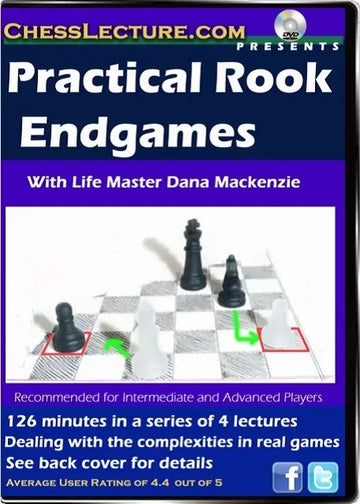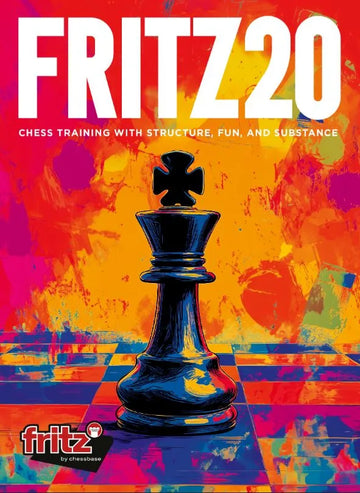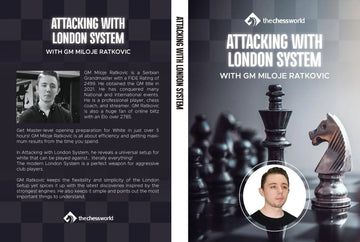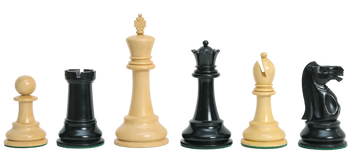Chess Castling: Secure Your King Early and Attack!
If you're new to chess, you're probably eager to learn all about chess castling. How does castling work, what are the rules, and what are its benefits? If you've been playing chess for a while, you might be wondering when it's best to castle short and when to castle long, or how to attack a castled king.
In this guide, we've made sure there's something for everyone to learn about chess castling. From the essentials like the four rules of castling to openings that lead to opposite-side castling, we've got it all covered here!

What is Castling in Chess?
Castling is a special move in chess that is designed to move the king into safety toward the flank of the board and develop a rook toward the center of the board, where it can be more active. It is achieved by moving the king two squares toward the rook and the rook ‘leaping over’ to the square that the king just passed across.
Castling is allowed on either side of the board. Castling on the kingside, or ‘short castling,’ is more common, whereas queenside, or ‘long castling,’ only occurs in around 10% of castling instances.

The 4 Rules of Chess Castling
To avoid shouting matches over the chess table, it's crucial for each player to learn all four fundamental rules of castling!
1. The King and Rook Must Not Have Moved From Their Starting Squares
To castle legally, neither the king nor rook with which you are castling can have moved since the start of the game. Even if the rook and king have returned to their starting squares, castling is forbidden if they have moved since the game's beginning.
2. All Spaces Between the King and Rook Must Be Empty
Castling is only permitted across vacant squares. There must be no pieces between the king and rook for castling to take place.
3.The King Cannot Castle Out of Check
Castling out of check is illegal. If the king is in check, the player must find another way to avert the check and wait until another turn to castle.
4. The King Must Not Pass Through Check or Into Check
Just as castling out of check is illegal, castling over checked squares or into check is also forbidden. This means the king is not allowed to move across any squares or to a square that is under direct attack from an enemy piece.
Chess Castling Statistics
To get an idea of how important chess castling is, let’s take a look at some statistics from grandmaster games. The following stats were taken from thousands of games played by over fifty grandmasters:
- Castling short 81%
- Castling long 9%
- Castling on either side: 90%
These figures reveal that at the highest level of chess, castling kingside is nine times more popular than castling queenside. Since each player castles in 90% of games, both players castle in around 81% of games.
This just goes to show how valuable grandmasters consider castling to be! To emulate them, novice players should also be castling in the vast majority of games.
Why Castling Is Usually Recommended
In the vast majority of games at beginner to grandmaster level, both sides castle. So why is castling the king usually a good idea?
- Castling moves the king to safety. By moving to the flank of the board behind a wall of pawns, the king is usually far safer from attacks compared with remaining in the center.
- Castling develops the rooks. Rooks are usually more active and influential when positioned toward the center of the board. They’re also stronger when they can ‘see each other’—when there are no pieces that stand between them.
- Castling helps protect the flank pawns. By positioning the king behind three pawns, it directly protects all of them! While this benefit is sometimes overlooked, remember that the king is the only piece on the board other than the queen that can perform this role!

Castle to Attack!
An additional benefit of castling that beginners aren’t always aware of is castling to attack. By centralizing your rooks, you make them more active from where they can quickly attack through the central files.
Queenside Castling to Attack!
Castling as an attacking move is especially common when castling long on the queenside, which instantly posts your rook on the influential d-file.
In the example below, Black has just castled long to immediately pin White's knight on the d-file. With the move e7-e5 to follow, White will struggle to hang on to its knight!

Kingside Castling to Attack
Castling kingside can also sometimes be used to attack along a semi-open f-file. This is a common middle game motif following openings such as the King's Gambit and Vienna Gambit.
In this example, White has just castled kingside to land its rook on f1. From here, it bolsters the attack on f7.

To Castle Short or Castle Long?
A common question among budding chess players is, 'When is it better to castle short (castle kingside), and when is it better to castle long (castle queenside)?' The answer depends entirely on the position, but here are some broad principles:
- Short castling is usually more convenient since it can be done without moving the queen. Long castling requires the queen to move first, which isn’t necessarily a natural move in the opening.
- Short castling immediately places the king one square from the corner of the board, where he can protect all flank pawns in front of him. Long castling places the king two squares from the corner, meaning he needs to move again to protect all of the flank pawns.
- Short castling immediately places the rook on the f-file, where it serves a strong defensive role. Long castling immediately places the rook on the d-file, where it serves a more attacking role.
- Castling on opposite sides of the board (known as ‘opposite-side castling’) frequently gives rise to very sharp positions where both sides go for an all-out attack on the enemy fort. Pawn storms and tactical battles often ensue.
Openings That Lead to Opposite-side Castling
Opposite-side castling can often lead to fun, attacking positions where both sides unleash ferocious attacks on each other’s camps. If you enjoy these kinds of games, you may be interested to learn openings that often lead to opposite-side castling. These include:
- The Sicilian Defense—especially the Dragon Variation family
- The Caro-Kann Defense
- The Scandinavian Defense Modern Variation
- The Pirc Defense
- The Yugoslav Attack
- The King's Gambit
How to Attack a Castled King
While castling usually affords the kings more safety than remaining in the middle of the board, it doesn't make him invulnerable to attack! Here are some classic strategies to launch a mating attack on a castled king.
Pin Those Pawns!
A classic way to weaken a castled king is by pinning one or more of the pawns in front of the king before an attack!
In this example, White’s queen is pinning Black’s g-pawn. White could then move its bishop to h6 without being captured. Now, Black’s only way to avoid checkmate on g7 is to play g7-g6, losing a rook!

Open the a- or h-file!
If you’ve castled on the opposite side of the board to your opponent, a cunning way to attack their king is to open the a- or h-file so that your rook can attack down the flank.
In this example, in response to White playing h2-h3, Black plays a very clever h7-h5. Now, if White captures the bishop, Black can open the h-file by recapturing. After this, Black’s bishop and queen can join the attack, making checkmate very difficult for White to avoid!

Winning Sacrifice
Sometimes, it’s worth sacrificing a piece to damage your opponent’s defending pawns before swooping in with a mating attack!
The example below is the infamous 'Greek Gift Sacrifice.' White has just sacrificed its bishop on h7. After Black's king captures, White's knight and queen join the attack. Black won't escape checkmate without sacrificing at least one of its major pieces!

Back Rank Mate
One of the most infuriating ways to lose a chess game is to a back rank mate. This is where the king lies behind a solid wall of pawns and so can’t escape a check from the back rank.
In the example below, despite being up on material, White has neglected to create an escape route for its king. Now, Black can easily win by delivering a check on d1. After the rooks are exchanged, Black’s second rook seals White’s fate.

Reflections on Chess Castling
Castling is an extremely useful defensive move that can sometimes also facilitate attacking maneuvers. In the vast majority of games, it’s wise to castle to keep your king safe and develop your rook. Once castled safely, you're more free to focus on attacking plans.
Remember, castling on opposite sides of the board is a great way to set up an attacking game, and long castling can also sometimes be utilized to deploy immediate attacks on the d-file.
If you’re fairly new to chess, experiment with castling on both sides of the board! You might find it interesting the different types of games it can lead to.









